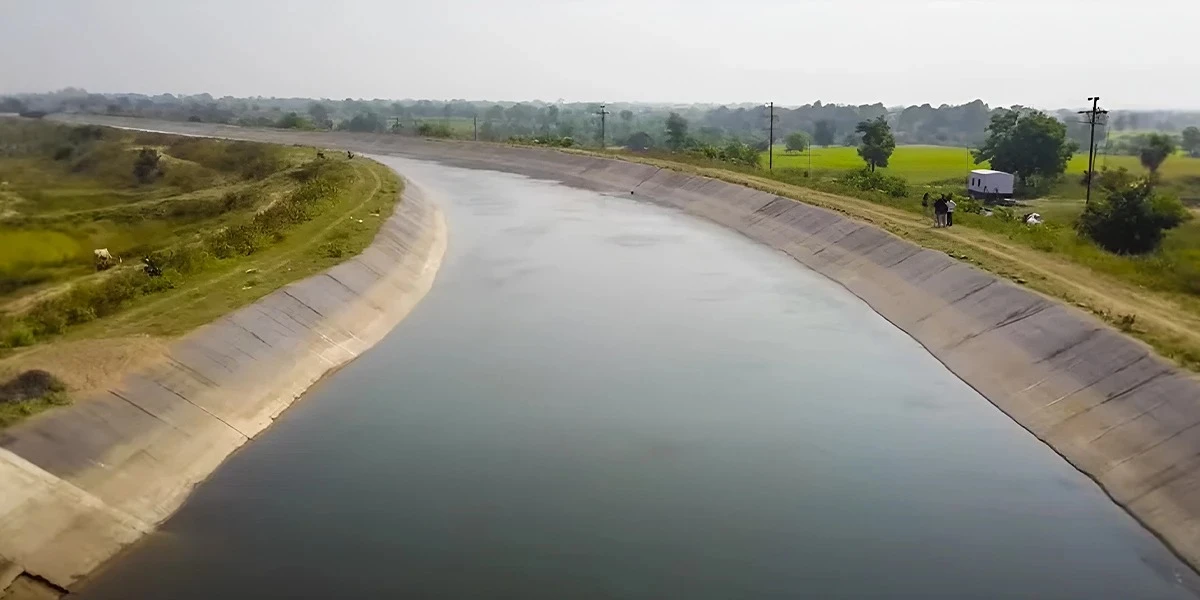

Water is a national concern today, not just an environmental issue. From irrigation channels that leak to reservoirs losing capacity every year, India’s water infrastructure faces a quiet but costly problem — seepage. For decades, engineers relied on clay or concrete, but time and weather wear them down. Something stronger and more adaptable was needed. That’s where bituminous geomembrane liners found their place.
A geo membrane is a waterproof layer used to stop water from escaping through soil or concrete. The bituminous version is built with reinforced fabric coated in high-quality bitumen. It sticks, bends, and seals like no other material. Once in place, it becomes a shield between water and the ground, locking moisture where it belongs.
What makes this important for India is simple: our geography is unpredictable. From scorching deserts to floodplains, the same project can face heat, cold, pressure, and movement — all in one season. Bituminous geomembranes can handle that.
Bitumen is naturally adhesive. When combined with a strong textile base, it forms a bituminous geo membrane that adjusts to the surface below. Whether the terrain is smooth concrete, compacted soil, or uneven rock, it finds its grip. That bond prevents micro-cracks, the small failures that often grow into leaks.
Unlike rigid materials that need expansion joints and heavy reinforcement, these liners are flexible. They stretch slightly when the ground shifts or when pressure rises inside a dam or pond. This flexibility gives them an edge in India’s seismic zones and flood-prone regions.
In irrigation departments, every drop saved translates to more farmland served. In power plants and industrial zones, leak prevention means safer operations. Government projects now seek materials that combine durability, cost-efficiency, and sustainability, and the bituminous geomembrane checks all three boxes.
It also fits well with India’s “Build to Last” approach. Once installed, it doesn’t demand frequent maintenance. Many state projects have already used geomembrane lining in canals and storage tanks with excellent results. Engineers who’ve worked on those projects often say that after installation, it’s “fit and forget.”
It resists punctures, even under gravel or stone layers. The surface reflects UV rays and doesn’t degrade under sunlight. It stays flexible through temperature swings. And because it’s bitumen-based, it bonds tightly at seams — no weak points, no leakage paths.
Another plus is chemical stability. Industrial and mining sites often deal with water carrying acidic or alkaline content. The liner doesn’t react or weaken under those conditions. That stability ensures groundwater stays safe and projects remain compliant with pollution norms.
In irrigation, the liner stops water loss through canal beds. That means more efficiency in distribution and reduced pumping costs.
For dams and reservoirs, it reinforces earthen embankments and prevents slow seepage that could compromise strength.
In mining and industrial sectors, it acts as a containment layer for process water, effluents, or tailings.
Urban authorities use it in stormwater ponds, artificial lakes, and treatment plants, where watertight storage is essential.
The same liner can be used across all these applications, which is why it’s quickly replacing traditional systems.
Talk to anyone who’s installed it, and you’ll hear a similar story — simple logistics, quick laying, and almost no complaints after. One project engineer in Madhya Pradesh once remarked that the “only issue” was how quickly it got done compared to the schedule. That’s the kind of feedback that keeps this material in demand for large tenders and multi-department projects.
At first glance, the cost might look higher than concrete or clay. But when you add up years of maintenance, patchwork, and water loss, the math flips. These liners don’t need much upkeep. A one-time installation can run trouble-free for decades.
In the long run, project planners find it easier to manage budgets when the risk of structural failure is low. That’s why tender documents today often mention geomembrane lining as a preferred or even mandatory feature for canal or reservoir projects.
Beyond performance, there’s a sustainability story here. A bituminous geomembrane liner reduces groundwater contamination by preventing seepage from industrial or agricultural waste. It also helps conserve stored water, which reduces the pressure on new extraction. Since the material lasts for years, replacements are rare, cutting down waste generation.
Every successful use of geomembrane technology is a small but significant step toward responsible water management — something India needs across every state.
In India, YOOIL Envirotech has been instrumental in introducing and implementing this technology on a large scale. Their teams have delivered several canal and reservoir lining projects across the country, bringing international standards to Indian terrains.
Each geomembrane liner supplied undergoes rigorous quality checks. Engineers ensure correct thickness, uniform bonding, and seamless installation on-site. The company’s experience across irrigation, hydropower, and mining sectors gives it a practical edge — it knows how to make the technology work under real conditions, not just on paper.
For government tenders, public infrastructure, and private industrial setups, choosing a bituminous geomembrane is a decision for longevity. It’s not an add-on; it’s a long-term safeguard. With India investing heavily in smart irrigation, dam rehabilitation, and industrial water systems, such solutions are no longer optional — they’re essential.
The country’s next leap in water security will depend on materials like these Strong, flexible, and built to last.For detailed specifications, technical consultation, or project support, YOOIL Envirotech provides complete assistance from design to execution.
